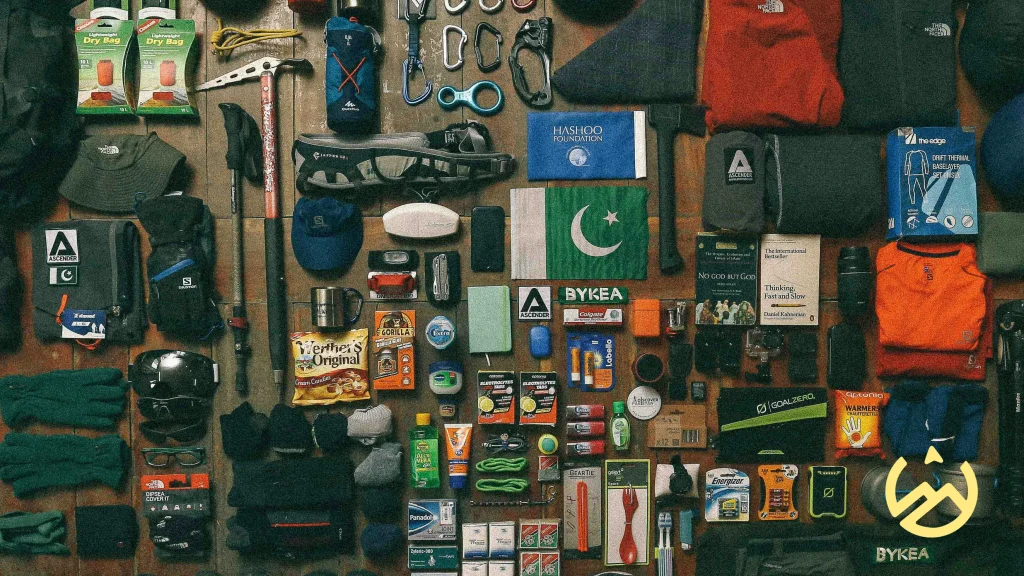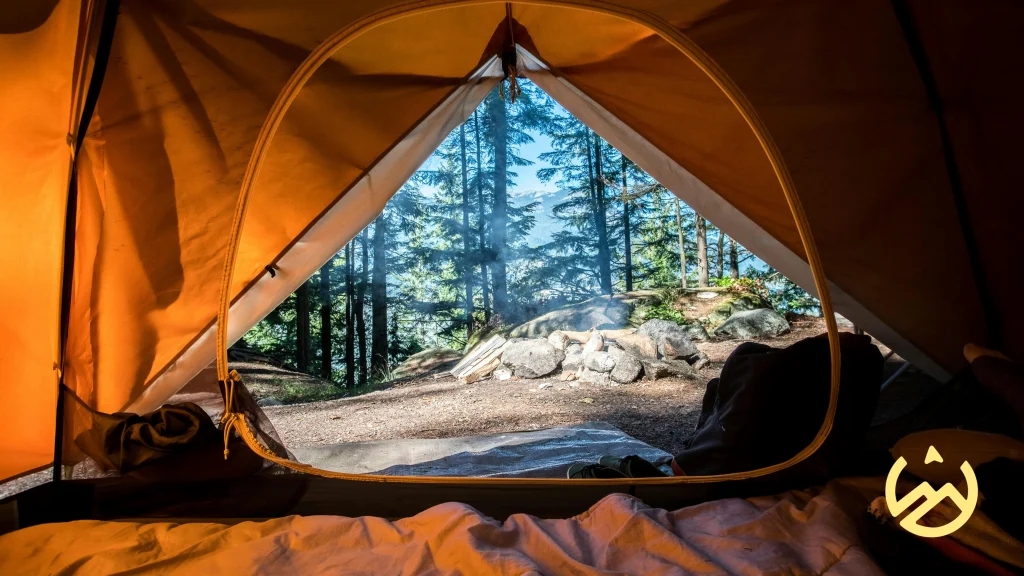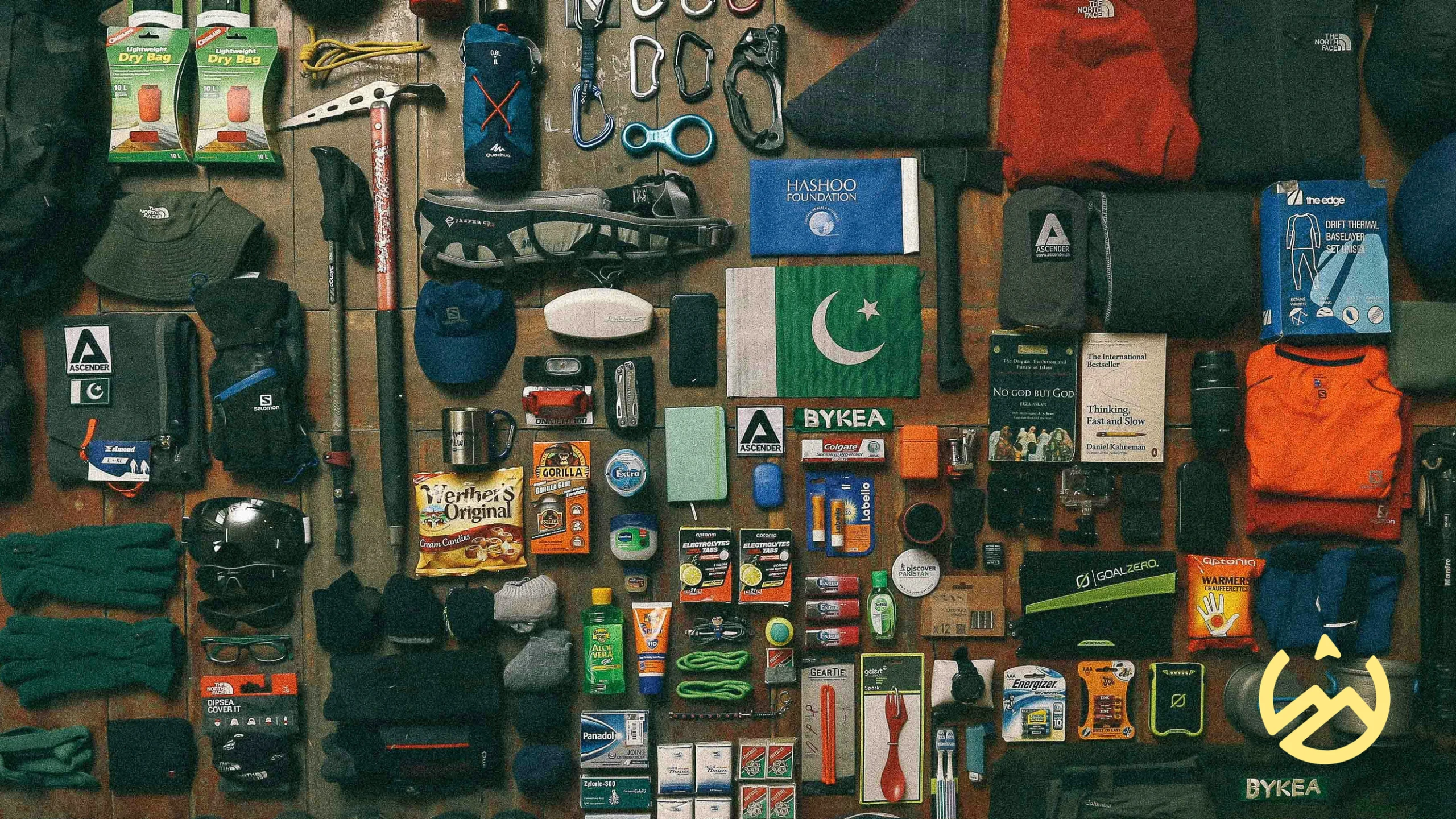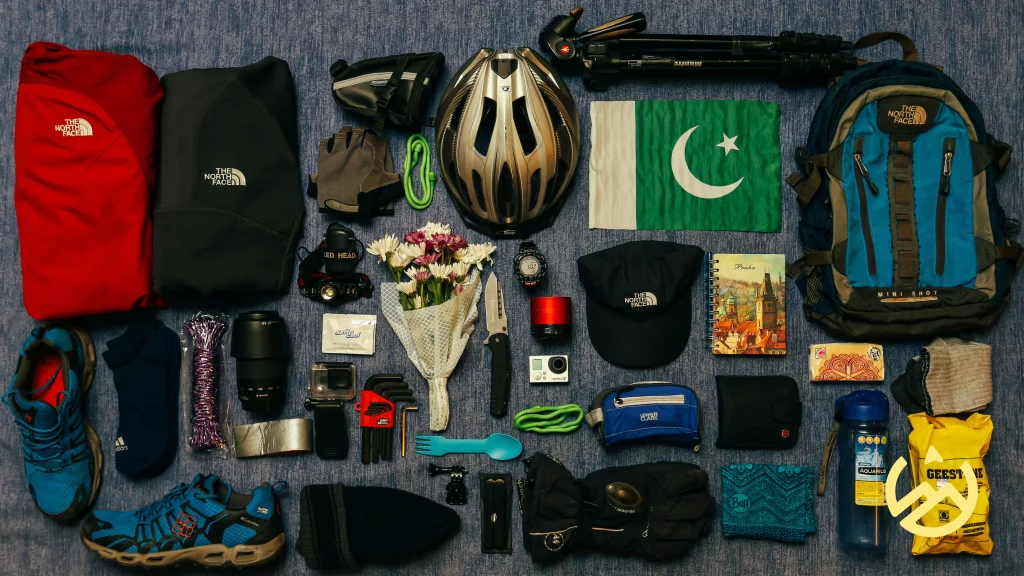We understand that mountaineering can be a dangerous activity, and that’s why we take gear selection seriously. Our collection of Mt. Kenya gear is tested and approved by our team of mountaineers to ensure that it meets our high standards for safety and performance. We want you to have the best experience possible on your climb, and that starts with the right gear.
Key Takeaways
- Proper layering is essential for maintaining optimal warmth in the varying climates of Mount Kenya.
- Waterproof and windproof gear is crucial to protect against the unpredictable weather conditions.
- Reliable GPS devices and first aid kits are non-negotiable for safety and navigation.
- Lightweight tents and sleeping bags are necessary for overnight stays on the mountain.
- Hydration and nutrition are vital; always carry water bottles, bladders, and high-energy snacks.

Clothing Essentials for Mount Kenya
Mount Kenya’s diverse climate demands a well-thought-out packing list for Mount Kenya to ensure comfort and safety throughout your climb. The right clothing can make a significant difference in your overall experience.
Layering for Optimal Warmth
Layering is crucial for maintaining body heat while allowing flexibility. Start with a thermal base layer to wick away moisture, followed by an insulating layer like a fleece jacket, and finish with a waterproof and windproof outer layer. This combination helps regulate your body temperature effectively.
Waterproof and Windproof Gear
Given the unpredictable weather conditions, it’s essential to have waterproof and windproof gear. A high-quality rain jacket and pants will protect you from rain and wind, keeping you dry and warm. Look for gear with sealed seams and adjustable hoods for maximum protection.
Footwear for Rough Terrains
Your choice of footwear can make or break your climb. Opt for sturdy, waterproof hiking boots with good ankle support and a solid grip. Pair them with moisture-wicking socks to keep your feet dry and blister-free. Gaiters can also be useful to keep debris and water out of your boots.
Remember, the clothes you choose should be efficient and lightweight, especially for the summit day.
Safety and Navigation Tools
Reliable GPS Devices
When climbing Mount Kenya, having a reliable GPS device is crucial. These devices help you navigate the challenging terrain and ensure you stay on the right path. Our professional tour guide will help keep you safe when mountain climbing or trekking, but a GPS device adds an extra layer of security.
First Aid Kits
A well-stocked first aid kit is essential for any climbing expedition. It should include bandages, antiseptics, pain relievers, and any personal medications. Being prepared for minor injuries can make a significant difference in your overall safety.
Communication Equipment
Staying in touch with your team and emergency services is vital. Reliable communication equipment, such as two-way radios or satellite phones, ensures you can call for help if needed. This is especially important in remote areas where mobile phone signals may be weak or non-existent.
Always prioritize your safety by carrying the necessary tools and equipment. Proper preparation can prevent accidents and ensure a successful climb.

Climbing Equipment
When preparing for a climb on Mount Kenya, having the right equipment is crucial for both safety and success. Proper equipment is extremely important to the enjoyment, comfort, and safety of your trip. Below are the essential climbing gear items you need to consider:
Ropes and Harnesses
- Ropes: It’s recommended to bring two ropes, each 60 meters in length, preferably size 9. Ensure the ropes are in good condition.
- Harness: Most modern rock climbing harnesses are suitable. A belay loop is a good idea for added safety.
Carabiners and Quickdraws
- Locking Carabiners: Bring at least 6 locking carabiners and 12 regular carabiners.
- Quickdraws: A minimum of 6 quickdraws is recommended for efficient climbing.
Helmets and Safety Gear
- Climbing Helmet: Almost any UIAA-approved helmet will work fine, but opt for a lightweight one. Ensure you can fit a warm hat under it.
- Belay/Rappel Device: Devices such as an ATC or similar are essential for safety during climbs.
- Shoulder Sling: Helpful for racking gear as you clean a pitch.
Remember, communal equipment (tents, food, cooking items, etc.) is provided. Below is a gear list of required, recommended, and optional items to bring on your climb.
Camping and Overnight Gear
When planning to summit Mount Kenya, having the right camping and overnight gear is crucial for a successful and comfortable experience. It takes months of training and preparation to ensure you have everything you need without over-burdening yourself with unnecessary items.
Hydration and Nutrition
Water Bottles and Bladders
Hydration is mandatory while out in the wild. Being intentional about carrying your water will save you lots of trouble and make your hiking time much easier. A water bladder is the best choice for carrying your water. Fill it, slip it into your hiking bag, and suckle from the pipe occasionally. This saves you lots of energy you would have otherwise wasted had you carried the water in a bottle or other container.
High-Energy Snacks
Snacks are key! Energy bars, nuts & trail mixes, juice boxes, chocolates, sweets, and fruits where possible. These snacks provide the necessary energy to keep you going during the climb.
Portable Water Filters
Access to safe drinking water is a crucial aspect of climbing Mount Kenya. Portable water filters or water treatment tablets are essential to ensure that you have safe drinking water throughout your journey. Drink 4-5 liters of water per day to stay hydrated and maintain your energy levels.
Weather Protection
When climbing Mount Kenya, weather protection is crucial to ensure a safe and comfortable journey. The weather can be unpredictable, and having the right gear can make all the difference.
Conclusion
In conclusion, when preparing for a climb on Mount Kenya, selecting the right gear is paramount to ensuring both safety and an enjoyable experience. Our curated list of essential gear has been rigorously tested and approved by experienced mountaineers, guaranteeing that it meets the highest standards for performance and safety. Remember, the key to a successful climb lies in carrying lightweight, compact items that offer maximum protection from the elements. Prioritize your health and safety by choosing gear that will keep you warm, dry, and well-insulated. As Sir Edmund Hillary wisely advised, ‘Carry as little as possible but choose that little with care.’ With the right preparation and equipment, you can conquer Mount Kenya and create unforgettable memories.
Frequently Asked Questions
What type of clothing is essential for climbing Mount Kenya?
Layering is crucial for optimal warmth. Ensure you have waterproof and windproof gear, as well as appropriate footwear for rough terrains.
Why is proper gear selection important for Mount Kenya?
Proper gear keeps you warm, dry, well-insulated, and protected from the unpredictable weather of Mount Kenya. It ensures your safety and enhances your climbing experience.
What safety and navigation tools are recommended for Mount Kenya?
Reliable GPS devices, first aid kits, and communication equipment are essential for safety and navigation during your climb.
What climbing gear is necessary for Mount Kenya?
You will need ropes and harnesses, carabiners and quickdraws, and helmets and safety gear to ensure a safe climbing experience.
What camping and overnight gear should I bring?
Lightweight tents, sleeping bags and pads, and portable cooking systems are essential for camping and overnight stays on Mount Kenya.
How should I manage hydration and nutrition while climbing Mount Kenya?
Carry water bottles and bladders, high-energy snacks, and portable water filters to stay hydrated and maintain energy levels throughout your climb.


